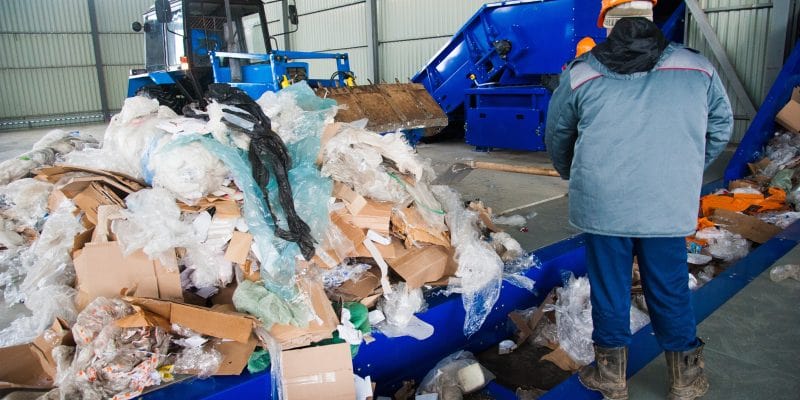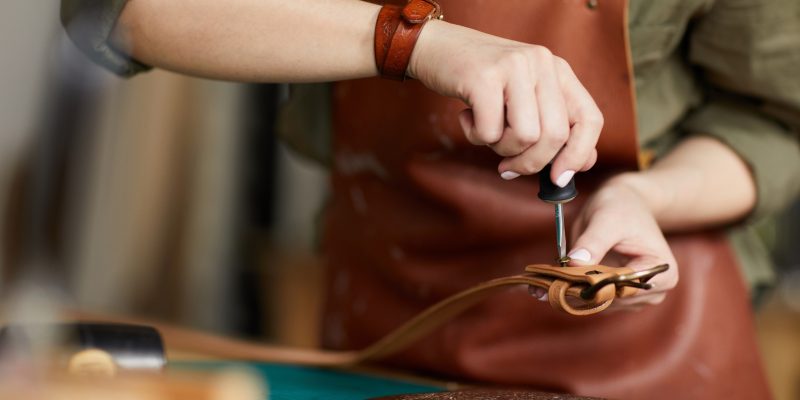Leather, a versatile and durable material, has been used for centuries to create various products, including shoes, bags, and furniture. However, with growing concerns about environmental sustainability, the question arises: can genuine leather be recycled? So, we will look at the opportunities and problems of leather recycling, as well as the benefits it provides and the future of this practice.
Introduction
The Importance of Recycling:
Recycling is critical for minimizing waste and saving resources. It contributes to the reduction of the environmental impact of different industries, including fashion and manufacturing. Leather waste, in particular, poses a significant challenge due to its complex composition and slow decomposition.
Growing Concerns about Leather Waste:
As the demand for leather products increases, so does the accumulation of leather waste. Discarded leather items end up in garbage dumps, which cause pollution and deplete natural resources. Addressing this issue requires innovative solutions and a shift toward sustainable practices.
Understanding Leather Recycling
What is leather recycling?
Leather recycling involves the transformation of leather waste into usable materials. It aims to minimize the environmental footprint associated with leather production and disposal. By adopting recycling methods, the industry can reduce its reliance on new raw materials and decrease waste generation.
Types of Leather Waste:
Leather waste can be categorized into several types, such as pre-consumer waste (trimmings, cuttings) and post-consumer waste (discarded products). Each type presents unique challenges in terms of processing and recycling.
Challenges in Leather Recycling:
Recycling of leather faces various obstacles, including the presence of adhesives, finishes, and mixed materials. The heterogeneous nature of leather waste makes it difficult to achieve a uniform recycling process. However, advancements in technology and innovative approaches are gradually overcoming these challenges.
Leather Recycling Processes
Mechanical Recycling:
Mechanical recycling involves shredding and grinding leather waste into small particles, or fibers. These new products, like composite materials, insulation, or upholstery stuffing, can be made from these components. Mechanical recycling offers a way to repurpose leather waste, reducing landfill waste and conserving resources. It is a sustainable approach that contributes to the circular economy by giving new life to discarded leather.
Chemical Recycling:
Chemical recycling employs solvents and chemical treatments to break down leather waste into its constituent components. This process enables the extraction of valuable compounds, such as collagen, which can be used to produce new leather-like materials. Chemical recycling offers the potential to efficiently recover and reuse leather waste, reducing the environmental impact of leather production and contributing to a more sustainable future.
Upcycling and Repurposing:
Upcycling and repurposing focus on giving discarded leather products a new lease on life. Through creative designs and craftsmanship, artisans transform old leather items into unique and desirable products, reducing waste and promoting sustainability.
Benefits of Recycled Leather
Environmental Benefits:
Leather recycling significantly reduces the environmental impact of the leather industry. It reduces the demand for raw materials, uses less energy, and produces less trash that is disposed of in landfills. We may contribute to creating a future that is more sustainable by embracing recycling.
Economic Benefits:
Leather recycling brings economic benefits like cost savings through reduced raw material demand and increased profit margins. It creates new revenue streams from the sale of recycled leather products, stimulates job growth, and contributes to economic development. Additionally, it lowers waste management costs by diverting leather waste from landfills. Embracing leather recycling presents businesses with an opportunity to align sustainability with profitability, enhancing their competitive edge in the market.
Social Benefits:
Leather recycling can also have a positive social impact. It encourages community involvement, raises awareness about environmental issues, and promotes responsible consumption. Additionally, it provides access to affordable and sustainable leather products.
Limitations and Considerations
Quality and Durability:
One of the challenges in recycling of leather is maintaining the quality and durability of the recycled materials. Achieving a balance between recycling and ensuring product longevity remains an ongoing concern.
Energy and water consumption:
Recycling processes require energy and water inputs. It is essential to minimize these resource requirements and explore more sustainable alternatives to reduce the environmental footprint further.
Consumer Awareness:
Educating consumers about the benefits and availability of recycled leather products is crucial. Increasing awareness can drive demand, leading to more significant investments in leather recycling infrastructure.
Innovative Approaches in Leather Recycling
Advanced Recycling Technologies:
Technological advancements, such as laser cutting and 3D printing, are revolutionizing the leather recycling landscape. These cutting-edge technologies enable precise material separation and facilitate the creation of new, high-quality leather products.
Biodegradable Leather Alternatives:
Researchers are exploring the development of biodegradable leather alternatives made from sustainable materials. These innovative materials mimic the properties of leather while offering biodegradability, reducing the long-term environmental impact.
Circular Economy Initiatives:
The concept of a circular economy aims to minimize waste and keep materials in use for as long as possible. Leather recycling plays a crucial role in establishing a circular economy by reintroducing leather waste into the production cycle and reducing reliance on virgin materials.
Sustainable Fashion and Leather Recycling
Role of Consumers:
Consumers play a vital role in driving sustainable fashion practices, including leather recycling. By choosing recycled leather products and supporting ethical brands, individuals contribute to reducing waste and encouraging a more environmentally conscious industry.
Ethical Considerations:
Leather production has been associated with ethical concerns related to animal welfare and working conditions. Leather recycling offers a more sustainable alternative, aligning with ethical considerations and reducing the demand for new animal-derived materials.
Fashion Industry’s Impact:
The fashion industry is rapidly understanding the significance of sustainable production methods. By adopting recycling and embracing circular economy principles, fashion brands can reduce their ecological footprint and contribute to a more sustainable future.
Future of Leather Recycling
Technological Advancements:
Continued advancements in recycling technologies will enhance the efficiency and effectiveness of leather recycling processes. New methods and equipment will allow for better waste separation and increased material quality.
Collaborative Efforts:
Collaboration between various stakeholders, including manufacturers, researchers, and policymakers, is crucial for the development and expansion of leather recycling initiatives. At the end of the day, we can overcome problems and attain greater sustainability by working together.
Market Growth:
The demand for organic and sustainable products is steadily growing. As consumer preferences shift towards environmentally conscious choices, the market for recycled leather products is expected to expand, encouraging further investment and innovation.
Conclusion
By adopting different recycling processes, such as mechanical and chemical methods, and exploring innovative approaches like upcycling, the leather industry can reduce its ecological footprint and contribute to a more sustainable future. Recycling leather waste requires collaborative efforts from manufacturers, consumers, and policymakers. By raising awareness and supporting sustainable fashion practices, we can create a positive impact on the environment.
FAQs:
Q: Can leather be recycled at home?
Recycling leather at home is challenging. It’s best to utilize specialized recycling facilities for the proper processing and transformation of leather waste.
Q: Can recycled leather be of the same quality as new leather?
Recycled leather can offer similar quality to new leather, depending on the recycling process and the intended application. However, it may have variations in texture or appearance, adding uniqueness and character to the final product.
Q: Can I recycle small leather goods, such as wallets or belts?
Yes, small leather goods like wallets, belts, and accessories can often be recycled. Look for recycling programs that accept these items or consider donating them for reuse.





